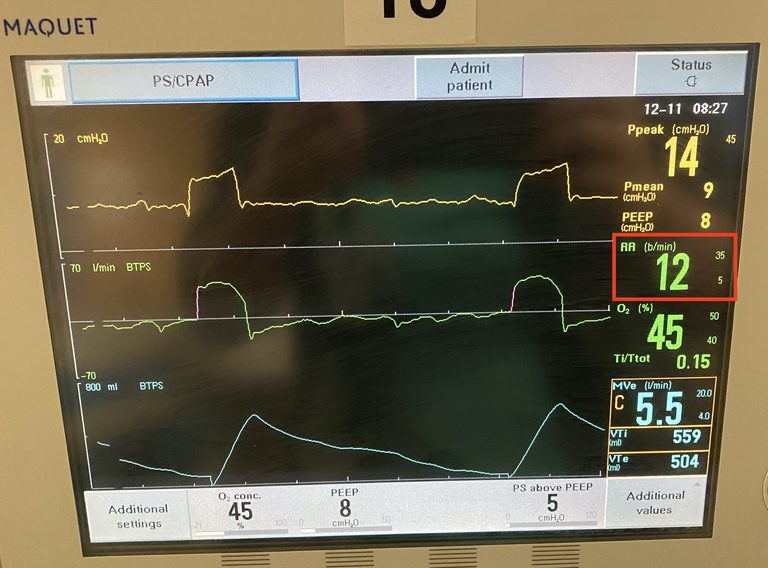Breadcrumb
Respiratory rate

A normal spontaneous respiratory rate is around 12-18 breaths per minute; in normal breathing respiratory rates go up and down as the metabolic requirements of the body increase or decrease (that is, as the body requires more or less oxygen or needs to blow off more or less CO2).
To the left is the respiratory rate on a Maquet ventilator, highlighted in red. The small numbers to right are alarm parameters; they tell the ventilator to sound an alarm if the patient's respiratory rate is outside of certain parameters, in this case a rate of more than 35 breaths or less than 5 breaths per minute. These alarm parameters can be changed as needed.
Respiratory rates are independent variables in assist control ventilation (AC) and synchronized intermittent mandatory ventilation (SIMV). These can be good modes of ventilation for patients who have limited or no respiratory drive; downsides include patient discomfort and increased need for sedation.

In mechanical ventilation, a related concept is the inspiratory:expiratory (I:E) ratio, the ratio of time spent in inspiration to time spent in expiration. A normal ratio is approximately 1:2. The time spent in expiration can be increased, to 1:3 or 1:4, in asthmatics, due to their prolonged expiratory phase. Thus, for patients experience an asthma attack or other form of bronchoconstriction, the respiratory rate should be lowered, to allow sufficient time for expiration and thus clearance of CO2.